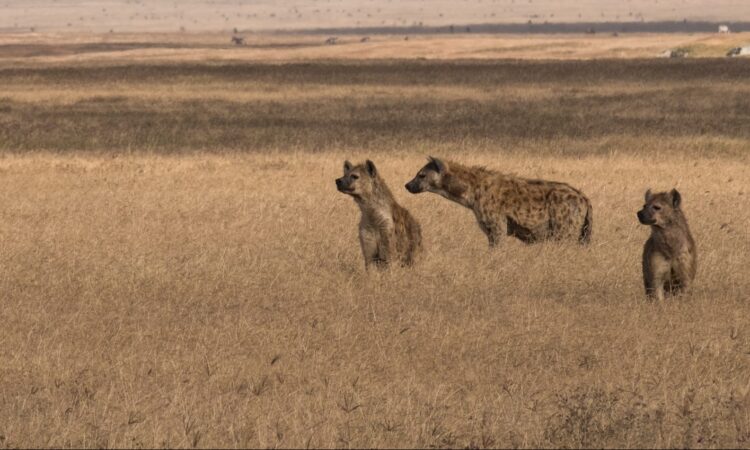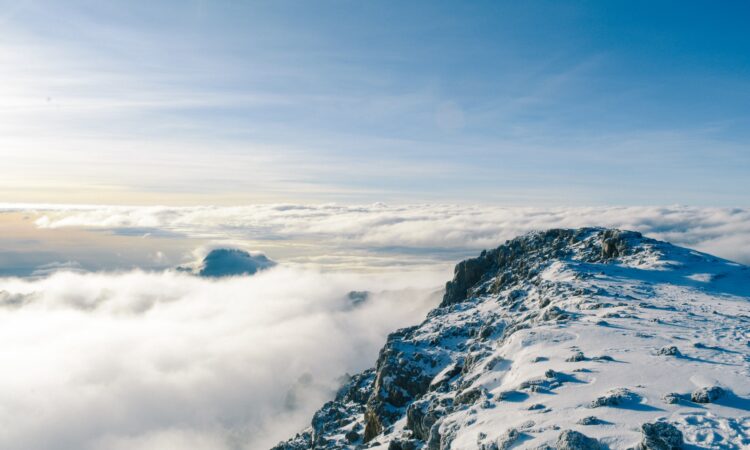Explore some of the best places in Tanzania on this 5-Day Serengeti Wildlife & Ngorongoro Crater Tour. Expect to see…
See our most popular 2025/2026 Ngorongoro Crater Tanzania Safaris & tours for an amazing crater wildlife viewing game drive when you visit Ngorongoro Conservation Area.
 On Offer
On Offer
Explore some of the best places in Tanzania on this 5-Day Serengeti Wildlife & Ngorongoro Crater Tour. Expect to see…
 On Offer
On Offer
Ngorongoro crater is located on the Eastern arm of the great rift valley in Ngorongoro Conservation Area in the Northern…
 On Offer
On Offer
Ascend to the top of the tallest mountain in Africa, Kilimanjaro mountain and visit some of the most popular national…
 On Offer
On Offer
On this 12-Day Kilimanjaro Climbing & Tanzania Wildlife Safari Adventure, you will be able to see the iconic African Big…
Established in 1959, the Ngorongoro Conservation Area features the world's largest caldera and significant archaeological sites. Activities include game drives, bird watching, and photographic safaris. Entry fees vary, and transport options include road and air. Popular attractions are Lake Magadi, Lerai Forest, and Shifting Sands. Explore Ngorongoro Crater below.
Named after the Ngorongoro Crater, the Ngorongoro Conservation Area (NCA) is undoubtedly one of the world’s natural wonders you shouldn’t miss to explore and experience. It is one of the magical sites in the famed Northern Safari Circuit of Tanzania.
Ngorongoro Conservation Area is a splendid destination of its own, a destination where you can find not only wildlife but also the most stunning scenery, unique cultures of the Maasai inhabitants and rare history of archaeological sites. A visit to NCA rewards holidaymakers with adventure of a lifetime!
The Ngorongoro Conservation Area is one of the world’s designated UNESCO World Heritage Sites. It was gazetted in 1959 and comprises of extensive craters, lakes, forests, gorges, streams, rivers, woodland and lush savanna grasslands. Amazingly, this protected area is famous for its incredible combination of landscape and wildlife from the Serengeti National Park Tanzania and Kenya’s Maasai Mara National Reserve.
Ngorongoro Conservation Area became most popular especially after the award-winning movie ‘Out of Africa’ that was partially shot in Ngorongoro. The film included the Ngorongoro Crater where this conservation area derives its name, Olduvai Gorge and the remotest crater highlands. The Ngorongoro Crater is best known by many as the Garden of Eden being a haven of wildlife. The Crater alone is a significant spot for the world’s biodiversity species since it inhabits several of the threatened species and not to forget the huge profusion of species of wildlife.
Ngorongoro Crater is world’s biggest unfilled volcanic caldera and its formation dates back to about 8 million after a large volcano exploded at the time. The massive eruption led to formation of a floor occupying up to 260sq.kms with depth of 2000 feet. The Ngorongoro Crater also comprises of the scenic Lake Magadi and Ngoitokitok spring, main source of water for conservation area’s wildlife all year-round. The Maasai herdsmen also use the water from these water bodies for their animals during the dry season.
Ngorongoro Conservation Area formed in 1959 as a multiple land use area that comprised co-existence of wildlife with semi-nomadic Maasai pastoralists who practice traditional livestock rearing. The area covers the splendid Ngorongoro Crater which is the largest caldera in the world. Today, The Ngorongoro Conservation Area expands to cover over 8288sq.kms and it largely consists of woodlands, forests, savannas, highland plains which extend from the vast plains of Serengeti National Park to the North-West Tanzania to the Eastern arm of the Great Rift Valley. Also, the NCA covers the Olduvai Gorge which is 14kms long deep ravine.
Location
Ngorongoro Conservation Area is 180kms West of Arusha and lies within the Crater Highlands region of Tanzania. The NCA is found suitably in Northern Tanzania. It takes its name from Ngorongoro Crater, an extensive volcanic caldera in this area. This conservation area is managed by Ngorongoro Conservation Area Authority.
History
The unique history of Ngorongoro Conservation Area dates back to about 3 million years when fossils of the first humans who lived in this area were excavated from Olduvai Gorge. After the first settlers, the pastoralists especially Mbulu and Datooga controlled the area for about 2000 years. Later in the 1800’s, the Maasai came into the area from Sudan and displaced the Mbulu and Datooga to other remotest areas of the reserve.
Oscar Baumann became the first European to arrive at Ngorongoro Conservation Area in 1892. In 1951 when the Serengeti National Park was established – the famed spot for witnessing wildebeest migration, NCA remained part of the Serengeti till 1959 when it was officially gazetted as an independent conservation area.
Originally, the Maasai pastoralists had freedom to move in the area after they were relocated from the Serengeti National Park. However, the 2009 Ngorongoro Wildlife Act made them move further and while they had a chance to stay in the area, they were highly restricted by the conservation authorities. Ngorongoro Conservation Area Authority is an organ in charge management of NCA.
Wildlife.
Ngorongoro Conservation Area is one of the destinations with a huge profusion of wildlife, accounting for a population of over 25000 animals that thrive in its crater alone. The crater is known for its incredible record of predators. The NCA a complete big five game destination, the elephants, rhinos, leopards, lions and buffaloes can be spotted in this area while on game viewing safari. Other interesting species of wildlife include hippos, elands, waterbucks, cheetahs, Eastern African wild dogs, zebras, blue wildebeest, hyenas, gazelles.
Birds in Ngorongoro Conservation Area.
Ngorongoro Conservation Area is an Important Birding Area in Tanzania, boasting of distinct bird species of over 500. This conservation area protects interesting birds such as Caspian lapwings, secretary birds, white backed vultures, splay-footed ostriches, long-crested eagles, harriers, blue mantled superb starlings, rufous tailed weaves, rosy-breasted longclaw, lesser flamingos, Kori bustards, Augur buzzards, grey crowned cranes, white storks, swallows, yellow wagtails, ibis, saddle bill storks, stilts and others.
The conservation area’s bird species are spotted in various habitats ranging from grassland plains, canyons, forest, lakes and marshes. During the wet season, most of the Eurasian migrant species can easily be spotted.
The Ngorongoro Crater & Olduvai Gorge.
Ngorongoro Crater is one of excellent spots to enjoy clear view of wildlife in Tanzania and Africa at large. Over 25000 wildlife thrive within the Ngorongoro Crater including elands, zebras, impalas, oribis, topis, wildebeest, hippos, East African wild dogs, cheetahs, buffaloes, black rhinos, leopards, crocodiles. Most of the lions and cheetahs can be spotted in the Ndutu Lake area. Additionally, you can also spot most of the spotted hyenas, servals, jackals, wild dogs and others.
Olduvai Gorge lies in between the Serengeti plains and Ngorongoro Crater. It is famed seat of humanity according to archaeologists given the fact that it was a place where remains of the earliest humans were discovered. Each year, thousands of tourists confine into this area to have in-depth learning on the work of the Leakey family and understand more on how earliest humans evolved. Holidaymakers can also pay a visit to the nearby small museum with fossils which date back to 3 million years.
Tourism in Ngorongoro Conservation Area; the area is undoubtedly a remarkable game viewing destination in Africa. Itself alone features as Tanzania’s to tourist attractions often explored by tourists on Tanzania safaris. The conservation area’s major safari activities to expect to enjoy include game viewing, walking tours to sight wildlife from the edge of the crater about 6 hours’ on-foot-walk experience; visiting the Maasai in their communities, camping, birding and others.
Best time to visit Ngorongoro Conservation Area (NCA).
A safari holiday to Ngorongoro Conservation Area can be carried out at any time of the year. Most of the conservation area’s wildlife spend most of their time around the crater thus offering ideal opportunity to enjoy clear view of them. But the best dry months are considerably the best for you to have excellent game viewing experience in the Ngorongoro Conservation Area.
The dry months begin in June, July, August and September till October. Wildlife species in this conservation area can easily be spotted given its shorter size of its grass with crowds at the crater. The dry season also lets you to take clear pictures of wildlife or watch them as they battle each other. The wildebeest calving/birthing season starts in January till February where most of the wildebeest can be sighted outside Ngorongoro crater giving birth. For enthusiastic birders, the wet or rainy months are the best for you to be in the Ngorongoro Conservation Area for birding. The wet or rainy to mark on your calendar as a birder are March, April, May.
Accommodation in Ngorongoro Conservation Area Tanzania
Most of the lodges and other accommodation options in the Ngorongoro Conservation Area exist around the rift valley escarpment/crater rim. They range from standard lodges, bush camps, eco-lodges, mobile camps, tented camps and cottages. They include among others Ngorongoro Crater Lodge for luxury, Ngorongoro Rhino Lodge for budget.
Others include Plantation Lodge, Ngorongoro Farm House just close to Karatu and for those of you who are interested in tented bush camps, the best places to stay in include Lemala Ngorongoro, Rhotia Valley Tented Lodge, Seasonal Kirurumu Ngorongoro Camp and others.
Entry fees to Ngorongoro Conservation Area (NCA).
As of 2021, the entry fees to Ngorongoro Crater for persons above 15 years is US Dollars 70.8, from 5-15 years you pay US Dollars 23.6 while children below 5 years don’t pay for entry fees. Smart cards are acceptable for you make payment entry fees at NCA or pay at the bank in Tanzania and come with pay slips to be given Ngorongoro Card for you to have access to Ngorongoro Conservation Area.
Getting to Ngorongoro Conservation Area (NCA).
Access to Ngorongoro Conservation Area is possible by road and by air. Most of the holidaymakers on Tanzania safaris can fly to Arusha International Airport Tanzania and continue to Ngorongoro using 4×4 Land Cruiser or take a charter flight from Arusha to Lake Manyara then connect to Ngorongoro.
From Arusha, NCA is 180kms away and it is found in the Northern region, a famed Northern Safari Circuit of Tanzania.
See our most popular 2025/2026 Ngorongoro Crater Tanzania Safaris & tours for an amazing crater wildlife viewing game drive when you visit Ngorongoro Conservation Area.
 On Offer
On Offer
Explore some of the best places in Tanzania on this 5-Day Serengeti Wildlife & Ngorongoro Crater Tour. Expect to see…
 On Offer
On Offer
Ngorongoro crater is located on the Eastern arm of the great rift valley in Ngorongoro Conservation Area in the Northern…
 On Offer
On Offer
Ascend to the top of the tallest mountain in Africa, Kilimanjaro mountain and visit some of the most popular national…
 On Offer
On Offer
On this 12-Day Kilimanjaro Climbing & Tanzania Wildlife Safari Adventure, you will be able to see the iconic African Big…
Brimming with wildlife, the Ngorongoro Crater in Tanzania is a wildlife paradise of its own - apparently one of the best places to spot game animals in Africa.
View Trip Ideas